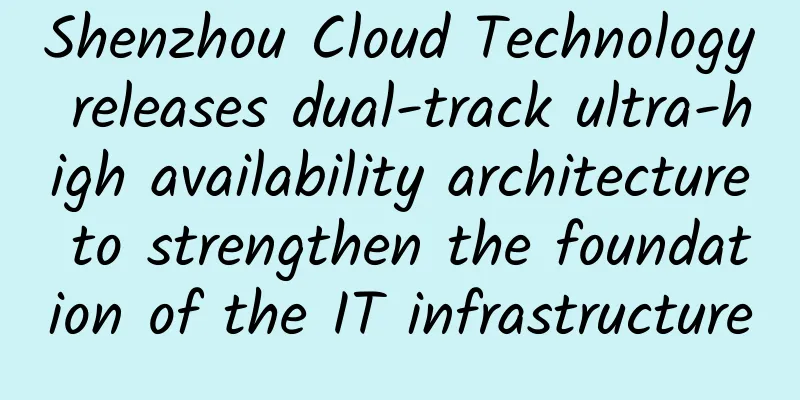How do operators grasp the pulse of the cloud computing market in the 5G era?

|
On June 6, 2019, the Ministry of Industry and Information Technology officially issued 5G commercial licenses to the three major telecom operators, marking China's official entry into the 5G era. At the same time, China became the fifth country to officially commercialize 5G after South Korea, the United States, Switzerland, and the United Kingdom. 5G requires the construction of millions of base stations, which is a huge investment. How to quickly recover the investment will become the most direct problem facing operators. At present, the three major operators have built more than 3.9 million 4G base stations, and the investment in the construction of 4G networks has exceeded 800 billion yuan. The scale of 5G base station construction will double that of 4G, which means that more funds will be needed to build 5G base stations. However, the revenue of the three major domestic operators in the first quarter of 2019 has declined compared with the same period last year. In the context of speed increase and fee reduction, the three major operators are facing great pressure to increase revenue and are in urgent need of finding new growth points.
At the same time, the rapid development of 5G has also led to the NFVization of the operator's network structure, and the operator's own OSS operation support system will also face challenges in support capabilities. The existing system lacks transmission convergence, virtualization modeling and systematic maintenance capabilities. Therefore, OSS needs to continuously explore new support and maintenance systems to adapt to the new requirements of 5G operations. Cloud computing provides new opportunities for operators 5G's large bandwidth, low latency, and massive connection characteristics will bring new changes to thousands of industries, and its application areas can be expanded to smart cities, emergency support, VR/AR, the Internet of Things, smart retail, etc. As an important provider of network services and a direct participant in the 5G ecosystem, telecom operators should fully integrate and utilize their advantageous resources and actively promote the development and growth of the 5G ecosystem to achieve win-win cooperation. By studying virtualization and cloud computing technologies, telecom operators can accelerate their transformation and upgrade to cloud service providers. Based on their infrastructure resource advantages, they can provide a full range of cloud resource services to end users through the Internet and charge users for the resources and services they use based on an on-demand subscription billing method. For operators, the future 5G will face challenges in terms of flexible network configuration, high-speed bearer networks, and low latency. Cloud computing has the characteristics of powerful computing power, secure data storage, dynamic resource sharing, and convenient client use. It is undoubtedly the most direct and powerful support for the development of 5G. In 2006, Google CEO Eric Schmidt first proposed the concept of cloud computing at the Search Engine Conference. Cloud computing itself is a concept with broad boundaries and strong scalability. With the development of 5G, big data and AI technologies, the widespread application of deep learning and related algorithms requires high-performance computers to perform a large amount of simulation training and data processing, which puts higher demands on the computing and storage capabilities of servers. Cloud computing uses virtualization technology to provide elastic scaling capabilities for computing services, and also solves the needs of more and more intelligent computing scenarios. "Without the development of cloud computing in recent years, it would be difficult for 5G to achieve the goal of official commercial use in 2020." Zhang Zhihong, deputy general manager of the cloud computing center of China Mobile's government and enterprise branch, explained China Mobile's understanding of the relationship between cloud computing and 5G. When 5G research and development started in 2014, China Mobile had already begun to establish a mobile telecom cloud development plan. The software architecture of systems in the telecommunications field will face huge changes in the 5G era, and 5G network components exist in the form of virtual machines. In fact, it is a special telecom cloud that supports the entire 5G infrastructure. According to China Mobile's understanding of telecom cloud, the new network architecture will be composed of a new data center in the form of cloud, an intelligent network dispatching center, and a network orchestration center. The integration of ICT technologies will build a new generation of networks with global resource scheduling, full open capabilities, elastic computing, and flexible architecture adjustment. 5G development promotes the upgrading of cloud computing industry In June 2018, the 3GPP meeting successfully passed the 5G NR independent networking function standard. Domestic operators have also set 5G timetables and plan to realize the official commercial use of 5G networks in 2020. The 5G era is coming. At the same time, 3GPP defines three major application scenarios for 5G, namely eMBB (enhanced mobile broadband), mMTC (massive machine type communication) and uRLLC (ultra-reliable low-latency communication). eMBB corresponds to high-traffic mobile broadband services such as ultra-high-definition video; mMTC corresponds to large-scale Internet of Things services; uRLLC corresponds to services such as autonomous driving and industrial automation that require low latency and high-reliability connections. It can be seen that 5G brings about a real social change that will surpass the existing communications industry ecosystem. The emergence of new networks and innovative services will inevitably promote the upgrading of the cloud computing industry. ***, the development of new technologies will inevitably lead to the comprehensive upgrade of cloud services. 5G will provide users with immersive scene experiences such as ultra-high-definition video, VR/AR, etc. At the same time, 5G will also be deeply integrated with scenes such as the Internet of Things, Internet of Vehicles, smart cities, industrial Internet, and smart medical care. In order to adapt to the development requirements of the above new businesses, cloud services must be upgraded to provide a full range of solutions for segmented scenes. Second, the high-performance requirements of the network will inevitably promote the overall improvement of cloud service quality. The new features of 5G in terms of ultra-large bandwidth, low latency, massive connections and network slicing will be met through technical innovation and coordinated development in both network architecture and infrastructure platform. In terms of network architecture, the structure will be simplified and access performance will be improved through control forwarding separation and control system reconstruction; in terms of infrastructure platform, a telecom-grade cloud platform will be built to support network element services, and at the same time, the network orchestration function will be used to further solve the problems of high investment in existing infrastructure, unreasonable resource allocation, and slow service launch. Third, high-investment network construction will inevitably drive the comprehensive upgrade of cloud deployment. Network evolution needs to maintain the continuity of existing network services, maximize the use of existing investments, and provide support for the development of future services. The characteristics of 5G itself require that the number of base stations double that of 4G, which requires a large investment. Therefore, from the perspective of cost reduction, efficiency improvement and business flexibility, cloud deployment in the 5G era is an inevitable trend. Fourth, operators should accelerate cloud technology innovation and capability platform construction in the cloudification process. Telecom operators need to upgrade and transform the cloudification process in four aspects: network architecture, infrastructure, service model and operation system. While meeting the needs of future "integration, integration and intelligence" scenarios, operators should continue to increase innovation investment in platform and cloud technology based on network capability opening, accelerate the promotion of cloud solutions for vertical industries, and keep up with the pace of development in the cloud computing era. Fifth, in terms of network architecture, accelerate the promotion of comprehensive cloud network reconstruction. The network structure of telecom cloud operators is gradually developing towards cloud and NFV. All network functions and business applications are running on cloud data centers. The new network structure includes a three-layer architecture of infrastructure layer, virtualization layer and platform orchestration layer, which are respectively composed of cloud data centers, intelligent network scheduling managers and network function orchestrators, thereby realizing network cloud and business cloud capabilities. Sixth, the biggest trend of cloud computing is to shift from the center to the edge, accelerating the implementation of edge computing applications. With the introduction of more and more localized processing scenarios for services, operators' cloud deployment has gradually shifted from the core cloud to the edge cloud on the user side. In this way, data on the user side does not need to be transmitted back and forth to the core data center hundreds or thousands of kilometers away, but only needs to be transmitted to the edge data center closer to the user for processing, thereby further reducing network latency and meeting the delivery requirements of future 5G real-time response services. At the same time, with the help of edge computing, we can further accelerate the integration of the industrial ecosystem, explore new business scenarios, and explore cloud service models for vertical industries. Seventh, in terms of business services, innovative development of cloud-network integration, and exploration of providing cloud-network integrated services. Telecom operators should build a new industry-oriented operation service system based on their own advantageous networks, focusing on cloud-network integration technologies and concepts such as cloud dedicated lines and cloud networking, and realize the functional requirements of cloud-network integration products. At the same time, with network connection as the center, provide network connection services for industry applications to northbound customers, integrate the cloud service capabilities of partners and the network services of operators themselves to southbound customers, and build a cloud-network ecosystem with operator characteristics. Eighth, in terms of operating model, gradually transform into a vertical industry cloud solution provider. The advantage of telecom operators lies in their large data centers and network broadband foundation, and they are better at building an end-to-end cloud-network integrated service link. By providing a complete set of industry-oriented cloud service solutions, the cloud computing value chain built by telecom operators will become a clear manifestation of their differentiated advantages. Therefore, in the 5G era, telecom operators should combine their own advantages to innovate technical capabilities and build cloud solutions for thousands of industries. In the first year of 5G, cloud computing is about to usher in a new round of explosion. For telecom operators, opportunities and challenges coexist. While insisting on their own innovation and development, operators also need to accurately grasp the pulse of the market, seek cloud cooperation ecology, and strive to start a tough battle with advanced cloud service providers, so as to achieve continuous growth in business revenue. Author: Cloud Computing Product Department of China Mobile (Suzhou) Software Technology Co., Ltd. | Zhao Yan, Jin Pengcheng, Bao Fangyan |
<<: 5G packages in various countries are ridiculously expensive! How is 5G priced in my country?
>>: How to deliver security as code: 11 tips to get started
Recommend
Five disruptive features of 6G networks
The telecommunications industry is constantly pur...
CommScope has been leading manufacturing innovation for 20 years and will continue to be online in the future
In early December 2017, CommScope held a 20th ann...
DNA of Fintech Data Chain
At the 2020 Financial Street Forum Annual Meeting...
Several thinking patterns that need to be changed in the 6G era
First of all, 5/6G is born for the interconnectio...
Unleash the power of 5G! H3C launches MSR series 5G routers
With the advent of the 5G era, 5G routers serve a...
Can you afford a 5G terminal that costs over 10,000 yuan?
Everyone wants to be the first to experience the ...
What two points should you pay attention to when choosing a network cable?
Network cable, as the name implies, is the cable ...
The launching ceremony of the 4th "Zhanhua Cup" 5G Application Collection Competition-Fujian Regional Competition and the Information and Communication Development Research Forum were successfully held in Xiamen
[[406599]] From left to right: Ye Kai, Song Zifu,...
The three major US telecom giants spent huge sums of money to buy a new batch of 5G spectrum
According to foreign media, according to the late...
Dalian leads the nation in "Internet + Government Services"
Come listen to the stories of several friends and...
Krypt: ION Cloud Platform 2nd Anniversary San Jose CN2 GIA/Singapore CN2 GIA 20% off
Time flies. It has been two years since Krypt lau...
This article explains OSPF clearly.
[[426836]] OSPF OSPF is an IGP and a Link-State p...
Three steps to improve data center efficiency
Recently, Maggie Shillington, a cloud computing a...
NWCU's Smart New Campus 2.0, layout of "IT unified smart operation and maintenance" (Part 2): operation and maintenance organization management and process management
Xi’an University of Architecture and Technology i...
Exploration and implementation of 5G+AI in the security industry
With the empowerment of 5G+AI in the security ind...









